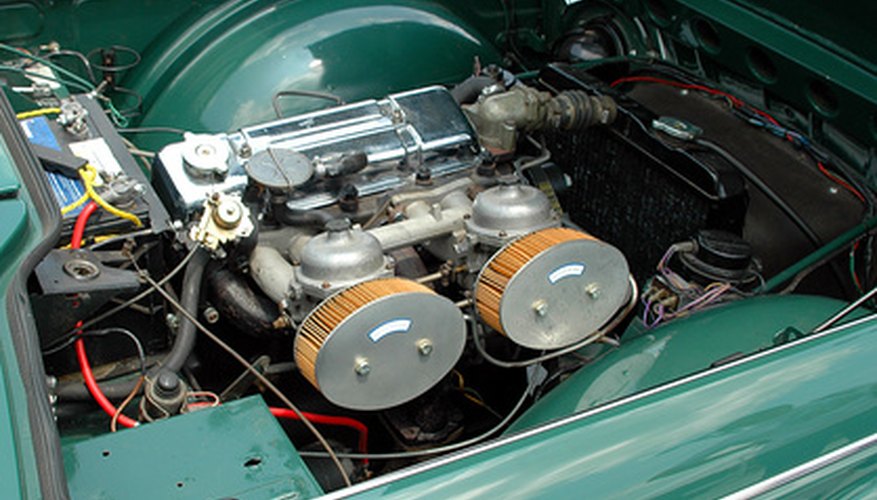The alternator and starter motor are two different parts of a car engine. The alternator converts energy from the running car engine into electricity to recharge the car battery and power any in-car appliances. The starter motor uses electricity from the battery to turn and start the engine when the car is switched on by the driver.
The Alternator
The alternator works while the car is running to replenish a charge in the car battery and power electrical appliances. In contrast to the starter motor, it is powered by the engine and not the battery. To keep the car running, the battery powers the spark-plugs, the water pump and fuel pump and many other vital engine appliances. Without the alternator, the battery would lose its charge in a relatively short time.
- The alternator works while the car is running to replenish a charge in the car battery and power electrical appliances.
- To keep the car running, the battery powers the spark-plugs, the water pump and fuel pump and many other vital engine appliances.
How The Alternator Works
The alternator uses electromagnetism to generate electricity for the car. The basic theory is that if you pass a strong magnet over a wire, the wire will generate electricity. If the wire is looped and coiled many times in a small area, the magnet will produce a stronger current in the wire. Inside an alternator is a ring of stationary loops of wire called the stator. Inside the stator is the rotor, which contains the magnet. The rotor quickly turns with the running engine inside the stator's loop of wires, electrifying them as the magnet passes. This current is used to charge the car battery and power any appliances inside the car, such as a the radio.
- The alternator uses electromagnetism to generate electricity for the car.
- If the wire is looped and coiled many times in a small area, the magnet will produce a stronger current in the wire.
Starter Motor
The starter motor is an electric motor powered by the car's battery, which "turns over" the engine to start it. In the early days of cars, this job was done manually by turning a crank on the front of the vehicle. Turning the engine over means rotating the engine without the use of fuel or spark plugs for a short period. The engine, due to its weight, cannot start itself and relies heavily on momentum to continue running. The starter motor provides the initial momentum for the engine to start, so when the engine is running, the starter motor stops.
- The starter motor is an electric motor powered by the car's battery, which "turns over" the engine to start it.
How The Starter Motor Works
The starter motor requires a large amount of electricity from the battery and is connected with large cables. When the key is first turned in the ignition, electricity is passed from the battery to the starter motor, which begins turning over the engine. This can be heard as the whirring sound just before the engine begins to run. When the key snaps back on its spring, the starter motor is stopped and the engine continues running. The starter motor can only be operated if the car is in neutral or park. In manual transmission vehicles, if the car is left in gear when the starter motor is activated, the car will jump forward suddenly and stall.
- The starter motor requires a large amount of electricity from the battery and is connected with large cables.
- When the key is first turned in the ignition, electricity is passed from the battery to the starter motor, which begins turning over the engine.
Key Differences
Though they are both vital parts in a car engine, the alternator and starter motor perform very different functions. The main difference is that the alternator generates electricity while the starter motor uses electricity. They are both parts of the engine, which use and generate electricity, but they provide functions in different parts in the cycle.
